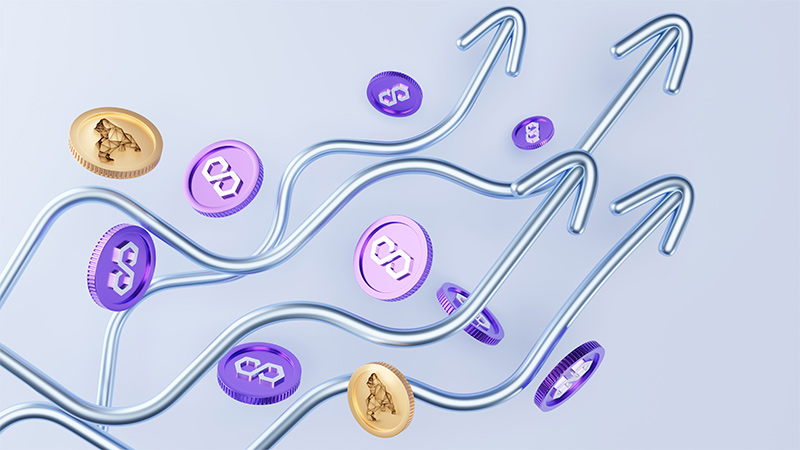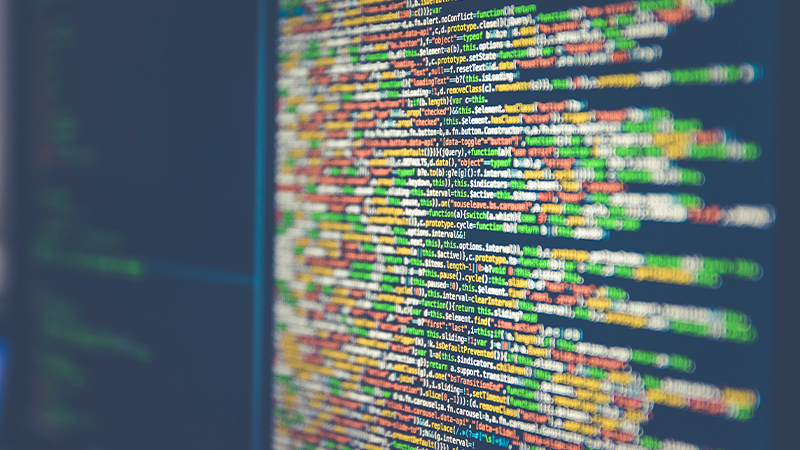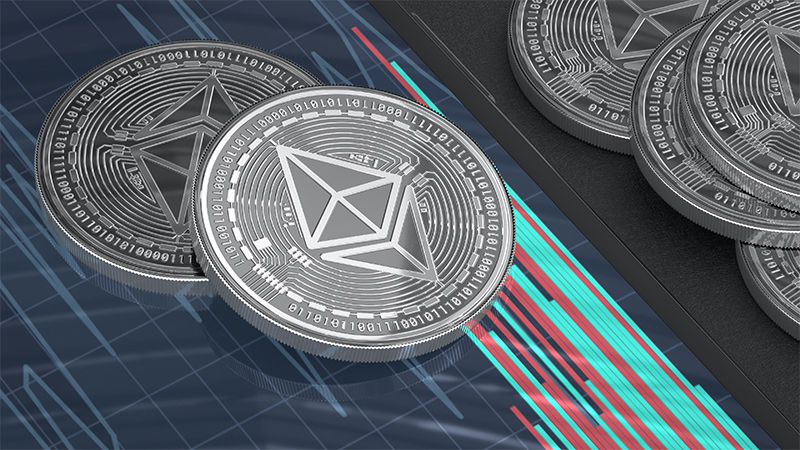The much talked about Polygon MATIC cryptocurrency platform is directed and discussed to provide a thorough guide to this relatively new kid on the block
Polygon is an Indian-based cryptocurrency powered by the MATIC token. It's a platform that uses the Ethereum blockchain to enable its networks to connect and scale. Customers use the Polygon platform to increase the scalability, flexibility, and sovereignty of blockchain projects and, at the same time, benefit from the interoperability, structural benefits, and security of the Ethereum blockchain.
MATIC is Polygon's ERC token, which means that it is compatible with all other Ethereum-based cryptocurrencies. Users secure and govern the Polygon network and pay transaction fees using MATIC. The name MATIC first appeared as an earlier part of Polygon's development. Although it was launched initially as Matic Network in 2017, the company rebranded as Polygon in 2021.
Polygon uses proof-of-stake, a cryptocurrency consensus algorithm mechanism that processes transactions and creates new blocks in a blockchain. This type of mechanism enables entries to be validated as they enter into a distributed database. In addition, they secure the database. In short, proof-of-stake secures the blockchain.
Proof-of-stake changes how the blocks are verified by using the equipment of coin owners. Investors place tokens as collateral and, in return, can validate blocks. Investors who stake their coins are called "validators."

2017
The Polygon start-up project is founded in Mumbai by four Indian software engineers; Anurag Arjun, Mihailo Bjelic, Jaynti Kanani, and Sandeep Nailwal.
2021
The name changes to Polygon early in the year, and its scope extended to the Metaverse. At the end of the year, Polygon buys Predicate Labs. This start-up developed the Mir blockchain to access a technology called "zero-knowledge rollups." This technology offloads data from Ethereum, speeds up the transaction process and reduces fees.
2022
In February, a group of investors led by Sequoia Capital India buy MATIC tokens at the value of $450 million, giving Polygon much-needed investment.
In April, Irish-American financial solutions firm Stripe choses Polygon for digital payments for its "low fees, speed, integration with Ethereum, and compatibility with many wallets." Twitter becomes the first beneficiary of the Polygon-powered service.
In July, Polygon is chosen to participate in Disney's 2022 Acceleration Program to expand into augmented reality, NFTs, and AI.
In October, The Indian Police Service in the Firozabad district of Uttar Pradesh adopts Polygon for crime reporting.
First and foremost, of course, it is a cryptocurrency. It, therefore, exists as another digital currency, using cryptography to secure transactions.
Polyon provides scaling solutions for Ethereum layer 2. Layer 2 solutions are built on top of an existing layer 1, such as Ethereum. The aim of layer 2 is to increase the capabilities of the original layer 1. Layer 2 offloads technological work from layer 1 by processing transactions off-chain. This process increases transaction speed and throughput. It has the additional advantage of reducing costs.
[Related read: The Ultimate Beginner’s Guide To Ethereum]
Polygon is the network, and MATIC is the tokens, i.e., the native cryptocurrency. The tokens are created using the Ethereum blockchain. Customers use MATIC tokens to secure and govern the Polygon network and pay any transaction fees. As a result, many experts see the tokens as a good long-term investment.
Polygon is a proof-of-stake network and uses staked MATIC tokens to reach consensus. In addition, customers can earn rewards by staking MATIC tokens to secure the network.
DeFi (decentralized finance) leverages decentralized networks transforming traditional financial products, making them trustless and transparent protocols that run without any third-party interference. This type of ecosystem is known as a parallel blockchain. Parallel blockchains use combinations of artificial systems, computational experiments, and parallel executions on blockchain technology.
Side Chains
Polygon uses sidechains, which are separate blockchains running independently of Ethereum. They are connected to Ethereum Mainnet by a two-way bridge. Sidechains sometimes have independent block parameters and consensus algorithms. These algorithms are designed to produce efficient transactional processing.
Plasma Chains
Polygon uses plasma chains. These are frameworks used for building scalable applications. Plasma chains utilize combinations of smart contracts and crypto verification. They enable fast and inexpensive transactions by moving them from the main blockchain into a "side" chain.

ZK and Optimistic Rollups
Layer 1 blockchain solutions, validate the blocks and transactions on-chain. Layer 2 protocols use ZK-rollups, which process transactions, perform computations, and store data off-chain, all while holding your assets in an on-chain smart contract. In addition, optimistic rollups are layer 2 scaling protocols tailored for extending the throughput associated with the base layer of Ethereum. Also, optimistic rollups reduce the tech load on the main Ethereum blockchain.
Polygon's architecture consists of two compulsory and two optional layers. These are:
The Polygon Networks Layer
The Polygon networks layer supports all Polygon-based applications and blockchains. It is constructed of independent blockchain networks. The Polygon Network Layer supports building the transaction blocks, sorting the transactions, and the consensus algorithm of the app or blockchain.
The Execution Layer
The execution layer validates and executes transactions initiated on both the Polygon blockchain and other Polygon-built blockchains. All transactions on the Polygon network are finalized here.
These are mainly used for improved security and finalizing transactions networks that depend on the Ethereum blockchain.
The Ethereum Layer
The Ethereum layer validates and finalizes transitions, creates checkpoints, and resolves disputes. In addition, it exchanges data between the Polygon and Ethereum blockchains. In essence, the Ethereum Layer bridges the Polygon and Ethereum networks to enable Polygon-based applications that rely on the Ethereum blockchain to validate transactions.
The Security Layer
The security layer operates according to the 'Validator-as-a-service' model. It enables the use of the security facility on the Ethereum blockchain. Polygon apps use the security layer to use Ethereum blockchain miners as their validators in return for preset rewards.
Polygon has a complete set of scaling solutions for the Ethereum network.
Polygon PoS
This solution uses sidechains for transaction processing to achieve unprecedented transaction speed and cost efficiency. In addition, PoS utilizes the powerful Plasma bridging framework and solid decentralized proof-of-stake validators to ensure asset security.
Avail
Avail is a modular blockchain. It logs transaction data to provide other blockchains with the freedom of not having to. As a result, any execution environment can make use of Avail.
Nightfall
Nightfall is a hybrid Optimistic-ZK rollup that provides efficient and decentralized business transactions. At the same time, it maintains privacy and opens up new possibilities on Web3 for enterprises.
Zero
Described by Polygon as The World's most performant ZK L2, Zero utilizes Plonky2's speed to provide a more scalable and decentralized ZK L2. In addition, it has rollup and validium modes. As a result, this technology provides users with access to higher throughput and inexpensive fees.
zkEVM
Polygon zkEVM is a layer 2 solution on top of Ethereum. It can solve scalability by using mass transfer processing in a single transaction. Also, Polygon zkEVM is the first zk-Rollup to have source code available. This provides complete EVM opcode equivalence and provides a frictionless user experience, complete with the usual Ethereum security.
Edge
Polygon Edge is a modular frame used for constructing public or private Ethereum compatible blockchains. Edge follows the principles of modular architecture, providing Ethereum compatibility to your network.
Miden
This Layer 2 scaling solution for ETH relies on zk-STARKs (zero-knowledge technology) to bundle thousands of Layer 2 transactions into one single Ethereum transaction. By doing this, it increases throughout and, at the same time, cuts transaction fees.
Supernets
Supernets simplifies the development of blockchains by providing top-class support to assist in building your blockchains. Additionally, it cuts out the problems related to blockchain infrastructure maintenance.
As with all technologies, it has good and not-so-good features. Here are the good and bad that you get from Polygon.
Pros
Polygon has an excellent Ethereum blockchain base that comes with a loyal community. Written in Solidity, it is like Java; it's easier for developers new to Web3 to understand. It is compatible with EVM. There are grants and development support available, and it has a high transaction speed and low gas fees. Layer 2 technology can scale quickly; it's perfectly suitable for projects with large numbers of users carrying out many transactions.
Cons
It is entirely dependent on Ethereum. The transition to Ethereum 2.0 may have yet unknown adverse effects on the Polygon network. There is much competition from other scaling solutions. Polkadot is doing very well in creating multi-chain solutions to blockchains.
It is first essential to stress that these work together and are not in competition. Polygon is built on top of Ethereum and provides a less expensive and faster Ethereum experience. As a result, Polygon has become the most popular Ethereum scaling solution.
Users of Polygon will enjoy an almost identical experience to Ethereum users, plus some added features. For example, Polygon users can interact using the Metamask Web3 browser and import their Ethereum address but not their assets.
Gas fees on Polygon are paid in MATIC tokens, whereas Ethereum uses ETH. They can use the Polygon Bridge to transfer assets between Polygon and Ethereum. Users' NFTs and tokens will not appear in their Polygon Wallet or vice versa, even if both share the same address.

The transfer of assets from Ethereum to Polygon takes less than 30 minutes and incurs a gas fee of several dollars. Alternatively, transferring assets from Polygon to Ethereum takes up to three hours. In addition, it incurs three sets of fees, one paid in MATIC and two in ETH.
Polygon indeed provides a faster speed of transaction. However, Ethereum still remains the decentralized app with the most diverse and transparent landscape.
Users can purchase MATIC tokens using USD or other fiat money using crypto exchanges such as Coinbase. Binance.US, and Kraken. Anyone wishing to start will need to set up a Polygon Wallet. Some of the more popular ones are:
Crypto.com is a hot wallet offering the chance to buy and sell more than 250 cryptocurrencies.
Ledger Nano X is a very popular hardware wallet that keeps your NFTs and coins offline for added security.
Binance is a hot wallet for the Binance Chain, Binance Smart Chain, and Ethereum. Send and receive funds with ease.
Trezor Model T is a very advanced cold hardware wallet; it's ideal for beginners as it is easy to set up and use.
[Related read: Understanding Crypto Wallets | A Beginner's Guide]
Investing in Polygon is just the same as investing in Ethereum or Bitcoin. After choosing your wallet, you must find an exchange offering MATIC tokens. Coinbase or Binance are popular exchanges, so search there for MATIC tokens, and you're ready to trade.
More experienced traders can choose to buy Polygon on decentralized exchanges like UniSwap. They do this by using wrapped Ethereum (wETH). wETH are ERC-20 tokens enabling users to buy and sell ETH on decentralized platforms. If you wish, you can store your MATIC tokens in a Polygon wallet.
Digital investment experts predict that Polygon will be a reasonably good long-term investment.
Experts predict that the upward trend we saw during 2022 should continue into 2023. They also indicate that the price will quadruple over the next two years. So it certainly seems to have a solid future. The faster transaction speeds and lower gas fees make it an exciting proposition for many, especially beginners in crypto.
Polygon MATIC has had a strong introduction in the world of cryptocurrencies. This Ethereum-based token and network is a helpful tool for connecting Ethereum-compatible blockchains. Furthermore, as a scaling solution, it is respected and has built up a solid community of users.
It is easy to use and inexpensive, a perfect combination. Therefore, its popularity will likely continue in the future. Its popularity lies in the ability to increase the scalability, flexibility, and sovereignty of many blockchain projects while enabling users to benefit from the interoperability, structural benefits, and security of the Ethereum blockchain.
Many good resources are available for beginners and users alike to get more information. Take a look at these to gain as much knowledge as possible.
This resource is built by developers for developers. It's a handy site that teaches users how to build dApps, master Web 3, and much more. In addition, there are a whole host of curated tutorials.
This is a hub for Web3 nerds. They welcome developers, token holders, creators, builders, and fans. Get your questions answered here.
Take part in the Polygon network by providing resources to Polygon. Anyone can become a validator and earn rewards depending upon the amount of MATIC and the transactions on the network.
The whole Web3 ethos revolves around sustainability. However, climate change threatens to create new injustices in the world and will exacerbate existing injustices. The world is at risk from melting ice caps, sinking cities, and worldwide pollution to unprecedented temperatures and rains. Polygon is mindful of these issues and works with many organizations to help fight climate change. If this interests you, there are many areas here to get involved.
We hope that you find this ultimate guide to be a helpful resource in itself. However, we always remind you not to take this article as investment advice. Instead, we suggest that readers do as much research as possible. There is plenty of independent material out there to read. However, it would be fantastic if you follow us on Twitter to get updates, weekly news bulletins, guides, and much more. So keep it sensible and happy trading.
The much talked about Polygon MATIC cryptocurrency platform is directed and discussed to provide a thorough guide to this relatively new kid on the block
The ultimate guide to Bitcoin, its place in the cryptocurrency world, and how you can get involved should you wish. A comprehensive look at Bitcoin.